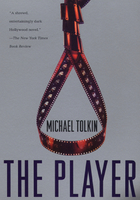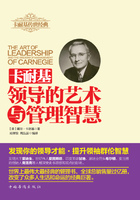Leading Organizations, Teams, Task Forces, and Committees
ESSENTIALS
With the right structures, people will learn more, teach one another, and exercise a level of control you cannot impose.
Change the division of labor and you change everything.
You overturn convention when you encourage people to use discretion in their work and to share information, coordination, and control of their work.
In this chapter we suggest how you can start: control what's controllable.
ERIC TRIST, A CREATOR OF "SOCIOTECHNICAL SYSTEMS," went down into a South Yorkshire coal mine in the 1940s and came up "a changed man." He had seen a mining system that engineers could not conceive. Enabled by a new roof-control technology, the miners and managers had formed self-managing work teams. Every miner learned multiple skills in place of narrow specialties. At a higher level of technology, the miners rediscovered the craftsmanship of their grandfathers. The mines with self-managing teams had higher output, less absenteeism, and fewer accidents than did traditional mines with tight supervision.
Thousands of others have since learned from the miners' innovation. Much of what we call "dysfunctional behavior" happens in work structures that prevent people from using everything they know. You probably have heard of places where jobs are so narrowly defined that even robots would be bored. Restrictive work rules undermine productivity. Leaders who coordinate and control from above settle for mediocre outcomes. You will get better results structuring work so that people control themselves. You cannot improve fragmented systems by teaching people human relations skills. Think of structure as giving people tools, knowledge, and authority that reduce the need for outside experts and tight supervision.
Unconventional? Yes. Effective? Proven repeatedly by others for decades and documented conclusively by Marvin Weisbord in Productive Workplaces: Dignity, Meaning, and Community in the 21st Century. The only question is whether you can do it. Studying your own behavior is the advanced course.
Controlling What's Controllable
We know the power of this idea because since 1982 we have been refining our leadership methods in a strategic meeting we call Future Search. We, along with thousands of others, have learned to control structure, not people, in all manner of work. If, for example, you walked in on a Future Search planning meeting anywhere in the world, you might see a dozen to hundreds of people sitting in small groups. Each group has a stake in the meeting's outcomes. Each selects its own discussion leader, timekeeper, recorder, and reporter, as well as other roles it deems necessary. Participants explore all views, prepare reports, and commit to action. They draw on everyone's skills and experience. The chart pads could be in a language that neither you nor we understand. People are managing themselves. Most have never done anything like it before. We are not irrelevant to their success. We set up the structures they use to stretch themselves.
We emphasize this to reinforce that most people are capable of self-control even when they do not know it. Setting up the right conditions, we believe, is a leader's central task-to increase the capability of the whole for responsible action. Here is the paradox: To self-organize, people need someone in authority to authorize them! That's you.
Shift the division of labor, the locus of control, and the responsibility for coordination to the people doing the work; you will see individuals spontaneously focus, collaborate, and produce.
"We treated people like production units…"
by Praveen Madan, Chief Executive Officer Kepler's Books (San Francisco, California, USA)
I am having to unlearn most of the education I got about managing people. In my master of business administration program, we treated people like production units to be controlled. Instead of hierarchy and control, we ought to be setting up the right structures so that people can work together.
I am in the bookselling business. My advice to leaders is to know that much of the stuff in management and leadership books is flawed. I learned that the hard way.
Example? I was once head of a high-intensity project involving eight people. We had seven weeks to deliver on a million-dollar strategy. Looking back 10 years later, I realize I was driving people like slaves. I was not paying attention to them. Just because I was working seven days a week, I expected everyone to do that. They had lives; they had families. We did six months of work in two months. But we paid the price. I did not intend to be a slave driver. I was just so intensely focused on a great end result that I didn't focus on the people who were working with me. I think that was a big mistake. We got a happy client and more follow-on work, but the price was too high. Several people got burned out, and they lost their trust in me.
What is different for me now is that I realize I cannot implement by vision alone. I am still a work in progress. I need
other people to be with me. I am dependent on them. So I try to set up the right structures to get a shared vision and shared responsibility. Every day I have to remind myself to serve the people who have chosen to be in this business with me. My job is to enable them to succeed in their work and live a balanced life. Otherwise in this (competitive) business I'm going to fail.
Communicate Purpose
A good practice for exercising control is starting each day with the question What do I need from others today? Keep your goals front and center. Let others figure out how to get there. Years ago Marv studied the leadership practices of 10 medical school deans. One always had a clean desk. Each day he worked from a single sheet of paper before him. At the top in big letters was his school's mission. Below in boldface was the priorities list. Under each priority was the name of the person in charge. On the paper he had noted any action step required that day. Finally, under his appointments, he wrote down what he would emphasize in each encounter. He controlled the whole enterprise from a single sheet of paper!
Control Time
Time is your scarcest resource. Like Old Man River, it just keeps rolling. Some goals take hours, others days or months. Time is among the few things you should control whenever possible.
There are a few others. For each priority, you are choreographing a dance in time with three other controllable variables: goal, people, and place. Satisfy yourself that you are getting the right people for the goal in a place that makes work easier and that you are allowing realistic time frames.
Clarify What You Want Right Now
Based on your role, let people know what you expect of them anytime you bring up your agenda.
"We have to be clear about where we are…"
by Josephine Rydberg-Dumont, Former Director IKEA (Helsingborg, Sweden)
I have long experience leading projects. I was responsible for every phase-exploration, consolidation, decision, and execution. I consider it important that people be clear about where we are in the process-what we are doing right now. That is how I handle situations when people get anxious about deciding. Maybe we have to talk more about this. I point out that we are trying to get as many perspectives as possible, not debate their merits. People need to know that there will be a time to make choices and decisions. I expect people to ask if it is not clear to them. Otherwise it can be a very messy situation.
Foster Healthy Conditions
These may not seem like much. You can control working conditions most of the time. If you make that a given day after day, you will make a huge difference in morale and performance.
Time Start and end on time. That takes discipline. It is also a simple way to make a huge difference in an organization's culture. If you wait for latecomers, you have handed over control to them. If you run over an expected end time, you stir up resentment unless you consult people first.
Meeting spaces All significant changes proceed one meeting at a time. So choose meeting rooms with care. Life in the twenty-first century is stressful enough without working in windowless dungeons. They are bad for your mental and physical health. We have never heard anyone complain about meeting rooms with windows and daylight.
We arrived at a conference center in Hawaii to find that a meeting arranger had closed the heavy drapes to "avoid distractions." Opening the curtains, we gazed out of floor-to-ceiling windows at the great Pacific Ocean, whales spouting in the distance, palm trees swaying in the wind, breakers rolling to the beach. We assured our worrier that this spectacular view was a problem we could live with. The lightness of spirit you could feel in that room persisted long after people let go of the scenery and got down to business.
Seating Chairs in rows direct conversation to the leader. Sitting in circles makes interaction easier. Years ago we had to remove tables from a room too small for 60 participants. The limitation proved a blessing. We found that groups of six or eight make better contact when they don't have tabletops between them. Comfortable chairs with wheels make it easy for them to configure themselves.
Tip: The next time you find chairs set up in rows, ask people to put themselves in a circle. Note the impact on the meeting.
Acoustics In rooms with bare walls and hard floors, sound bounces around like a ball on a squash court. Rooms with high ceilings may boom with echoes and people strain to hear. We like carpeted rooms with ceilings made to absorb sound. For large meetings we request cordless microphones that can be passed around like "talking sticks." A good sound system may overcome unfortunate acoustics.
Healthy snacks We advocate adding fresh fruit and nuts to the pastry table. We are not the sugar police, but we know that everyone works better fueled by protein.
Accessibility Many places have laws requiring easily accessible rooms for people with disabilities. We suggest that you consider it essential that key spaces be accessible to all.
Sustainability Meetings mean little if we destroy our shrinking planet. Our late colleague Ralph Copleman recommended many items you can control: reusable name tags, note and chart pads made from recycled paper, ceramic coffee mugs, and a recycling bin in the room.
Cultural Norms Matter When Self-Control Is Your Goal
Become aware of cultural time norms. "Here we operate on XYZ time," we have been told more than once. "It's normal for people to come late." We would be foolish to pretend that we can undo local customs. We also know we cannot do three hours of work between 9 a.m. and lunch when half the people don't show up until 10.
Ronald Lippitt, co-inventor of group dynamics, created the "raggedy start" for early arrivals. Give them a task to do on their own. Have them talk to one other about what they are working on, analyze information from the previous meeting, generate questions, or anything that adds value. Latecomers join conversations or start new ones. Continue together when you have reached critical mass.
SUMMARY
Leadership Skill 1: Control Structure, Not People
Exercise maximal control in structuring teams, task forces, and committees. Be as clear as still water about goals. Above all, encourage self-organization, coordination, and control by those doing the work. During meetings control those few things people need to keep working on the task: goal focus, healthy conditions, respect for cultural norms, time boundaries, and self-managing. Insist that others share responsibility for time and output. Indeed, that is what accountability should mean.
Using Leadership Skill 1
Think of the next important meeting you will lead.
Write down the goal. To what extent is it shared?
Who is coming? Whom else do you need?
Do you have the right room with good acoustics?
Can you reach your goal in the time available?
Do you seek a group decision?
If that is not possible, are you prepared to act?
What outcome do you want?















